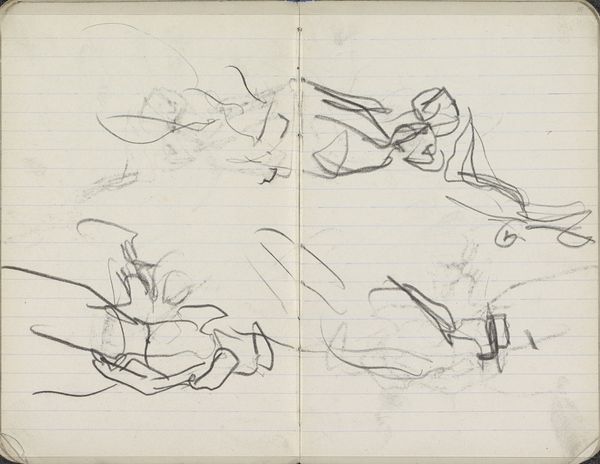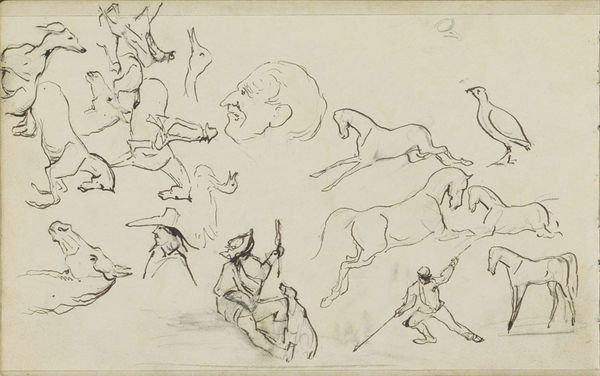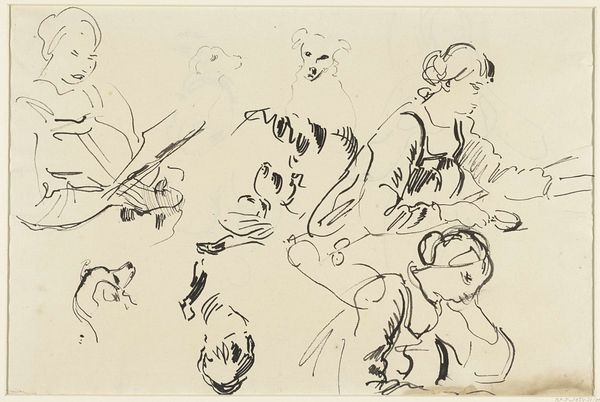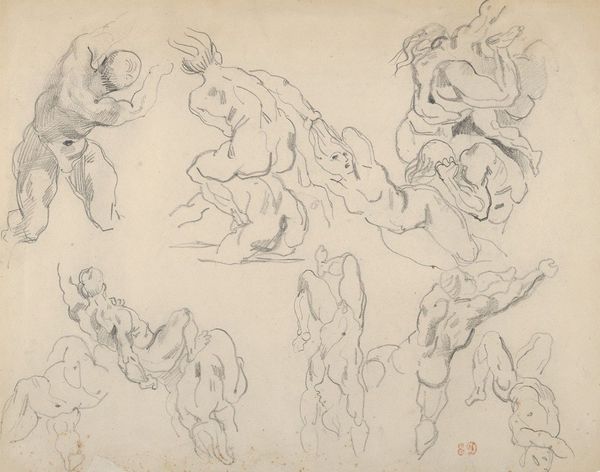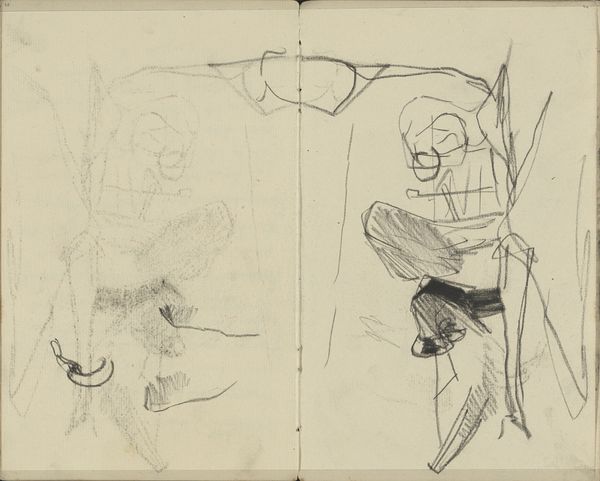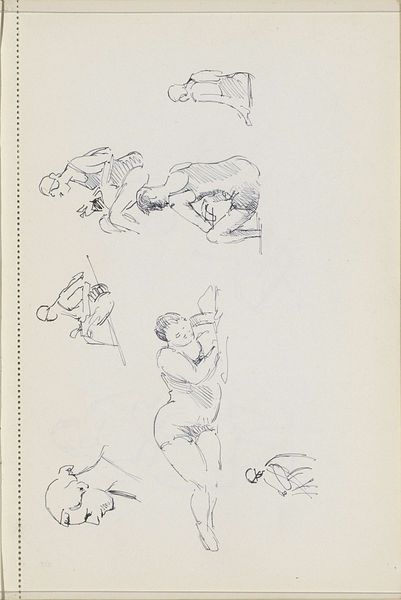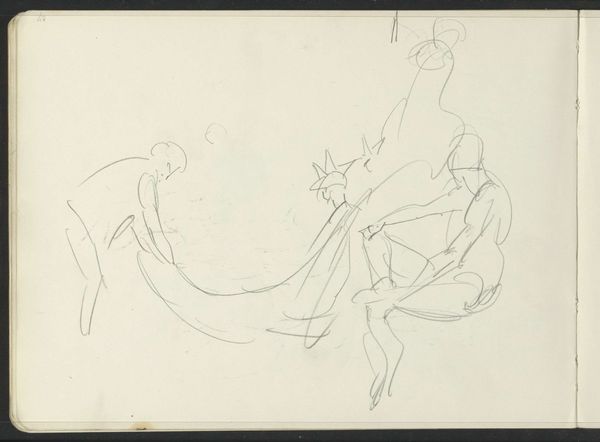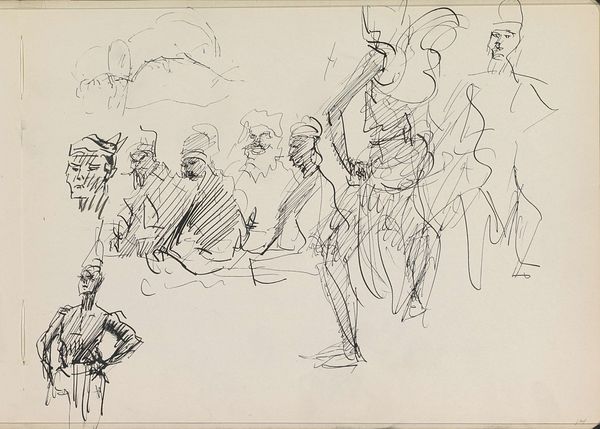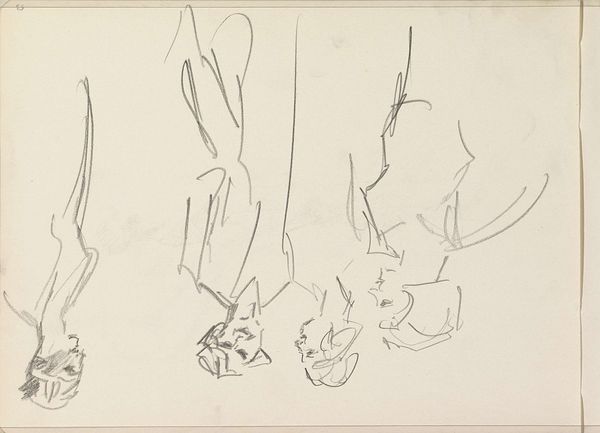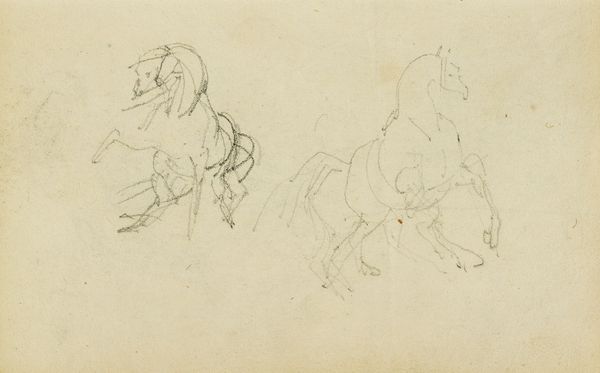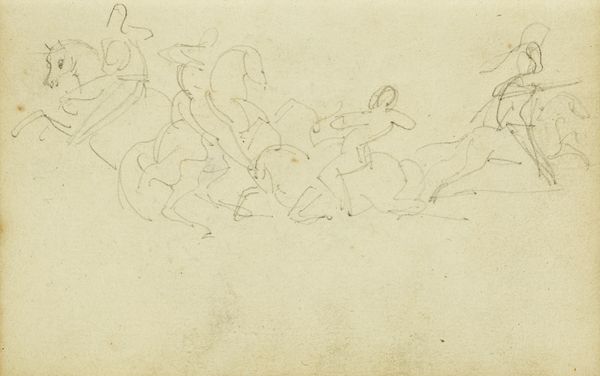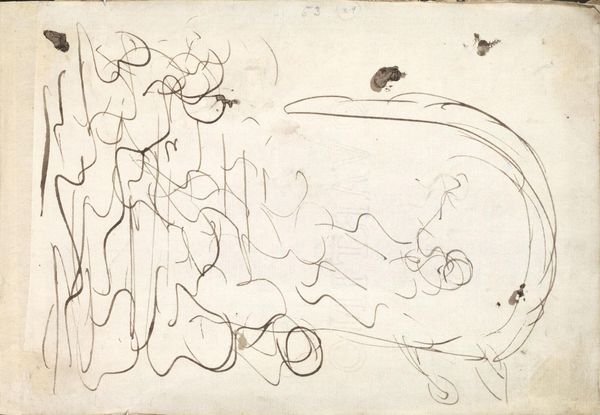
drawing, paper, pen
#
drawing
#
impressionism
#
pen sketch
#
landscape
#
figuration
#
paper
#
pen
Dimensions: 7 7/8 x 12 5/16 in. (20 x 31.27 cm) (sheet)15 3/4 x 19 3/4 x 1 1/8 in. (40.01 x 50.17 x 2.86 cm) (outer frame)
Copyright: Public Domain
Editor: So, this is "Equestrian Sketches" by Henri de Toulouse-Lautrec, from around 1883. It’s a pen drawing on paper, and what strikes me most is its incredible sense of movement, like the artist captured these fleeting moments perfectly. What do you see in this piece? Curator: The dynamism is certainly key. These sketches offer a glimpse into the world of Parisian leisure culture that Toulouse-Lautrec so keenly observed. It's important to remember that equestrian pursuits were often tied to aristocracy and rising bourgeoisie, representing social status and power. Given Toulouse-Lautrec's aristocratic background, how do you think that informed his perspective when portraying these scenes? Editor: That’s an interesting point. Maybe his upbringing gave him access and insight into this exclusive world, but his later focus on the margins of society, like the Moulin Rouge performers, suggests a certain… detachment, or even critique? Curator: Precisely. His works depicting popular entertainment demonstrate an interest in capturing all facets of French society. He was embedded in the aristocratic class, yet chose subjects considered unconventional at the time, ultimately making the underrepresented VISIBLE to a wider audience through his art. Do you think this challenges the social norms that these equestrian scenes typically reinforced? Editor: It does! It’s like he's both documenting and questioning the social order simultaneously. This makes me wonder if his unconventional style further added to that reading… Curator: Absolutely! Toulouse-Lautrec played a pivotal role in shifting what subjects were considered proper or beautiful for high art. It all challenges conventional notions. Editor: Seeing it that way definitely shifts my perspective. It's no longer just a collection of horse drawings, but a complex commentary on class and society. Curator: And it prompts reflection about the enduring power of art to shape cultural values and perceptions. Editor: Agreed. It also highlights the importance of understanding both the artist's background and the broader social context when interpreting a work of art.
Comments
No comments
Be the first to comment and join the conversation on the ultimate creative platform.
